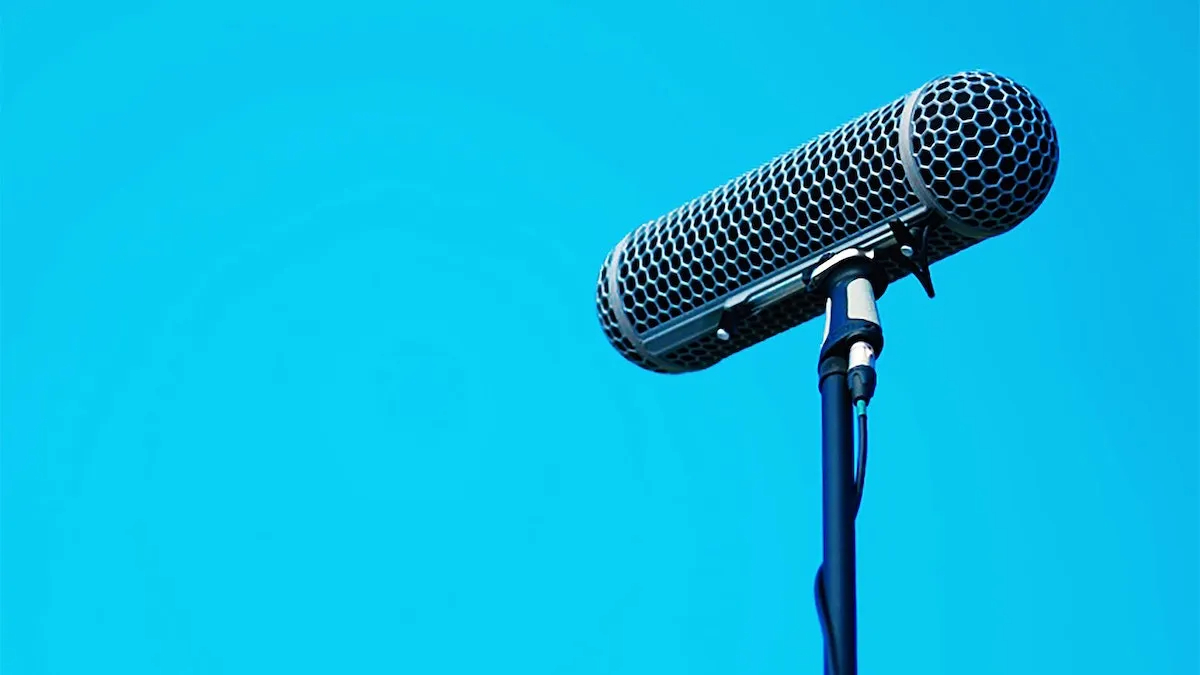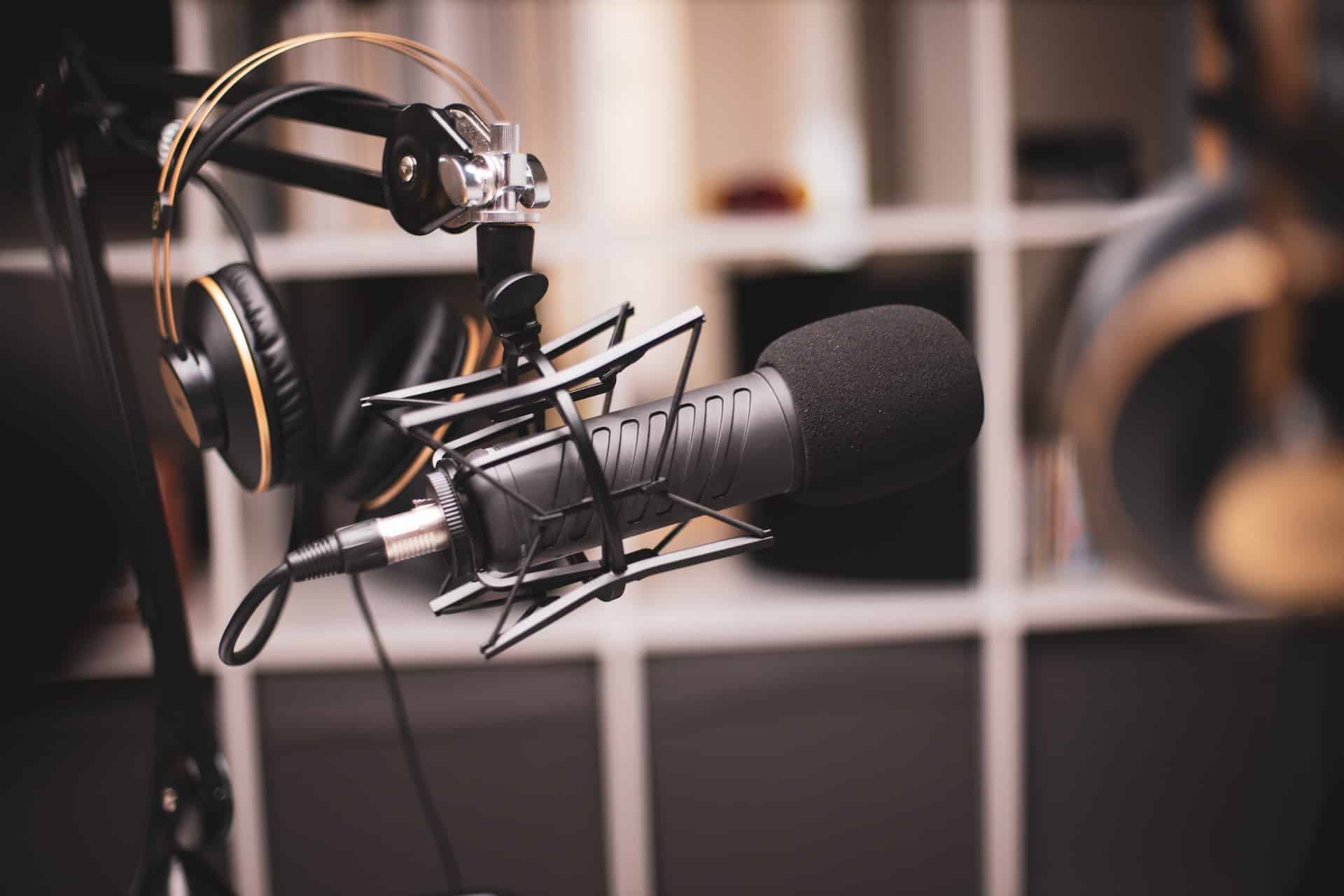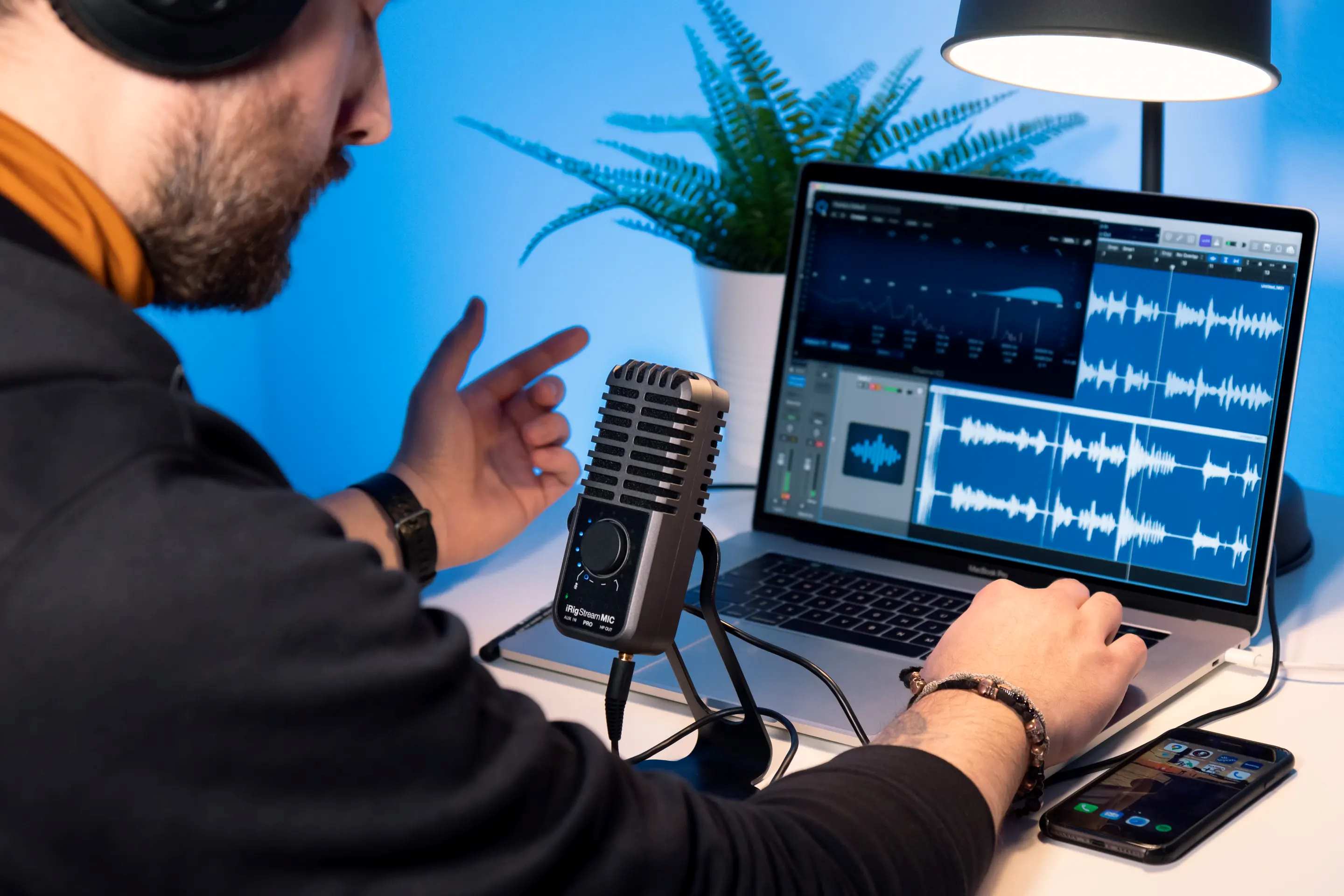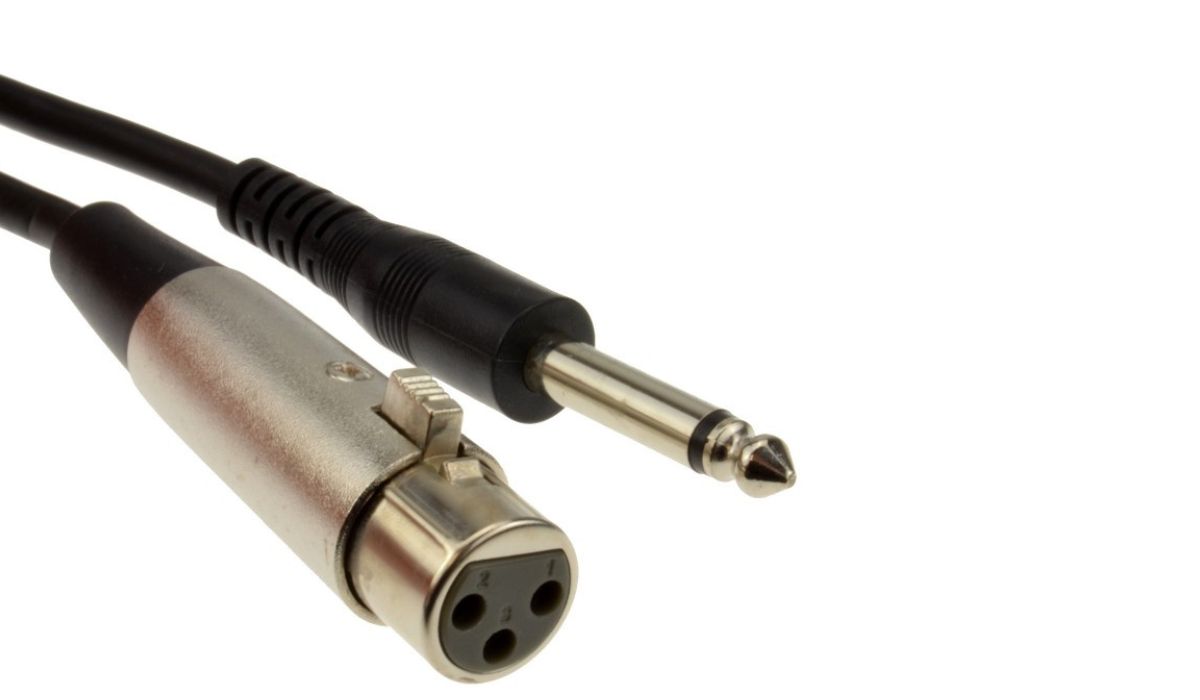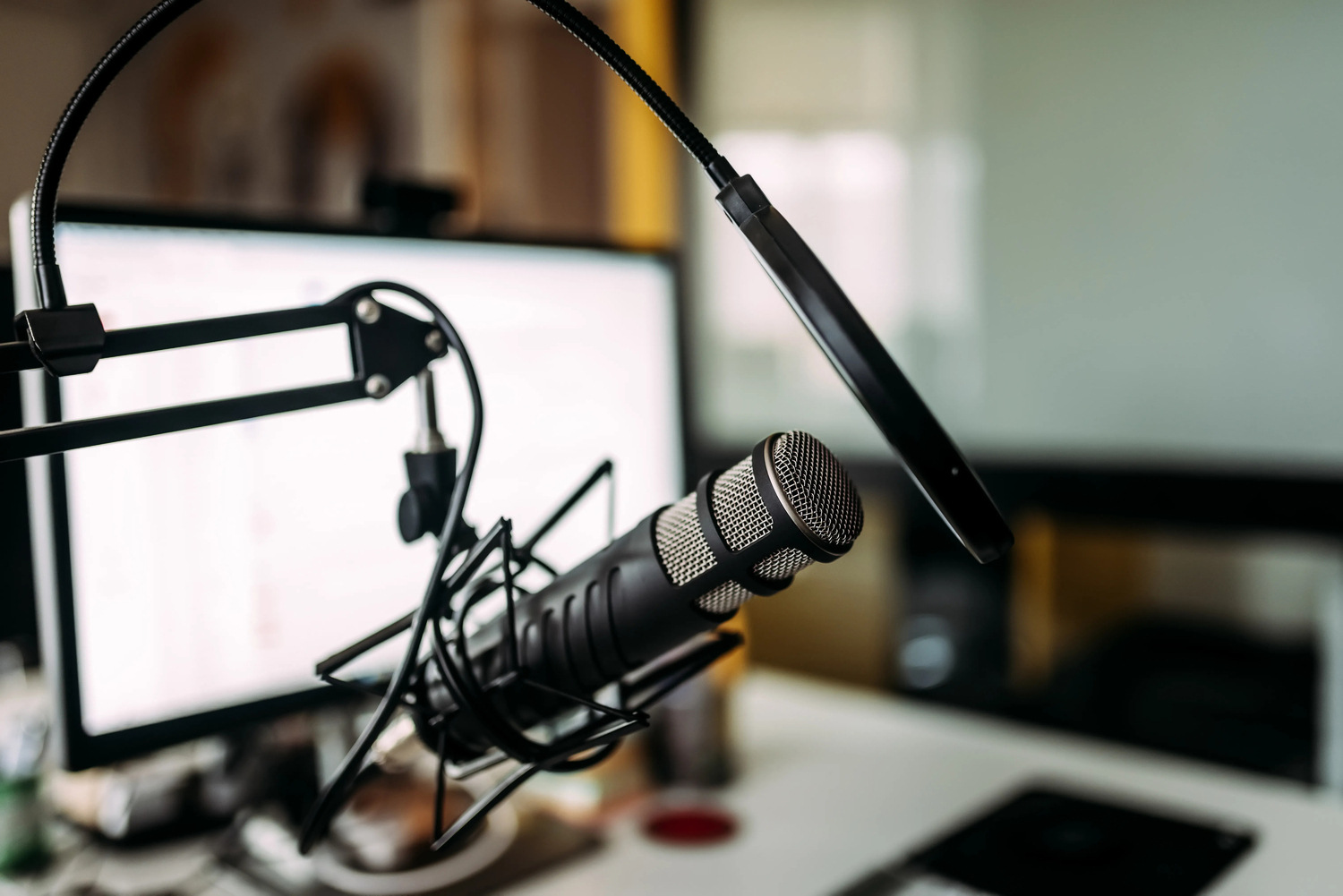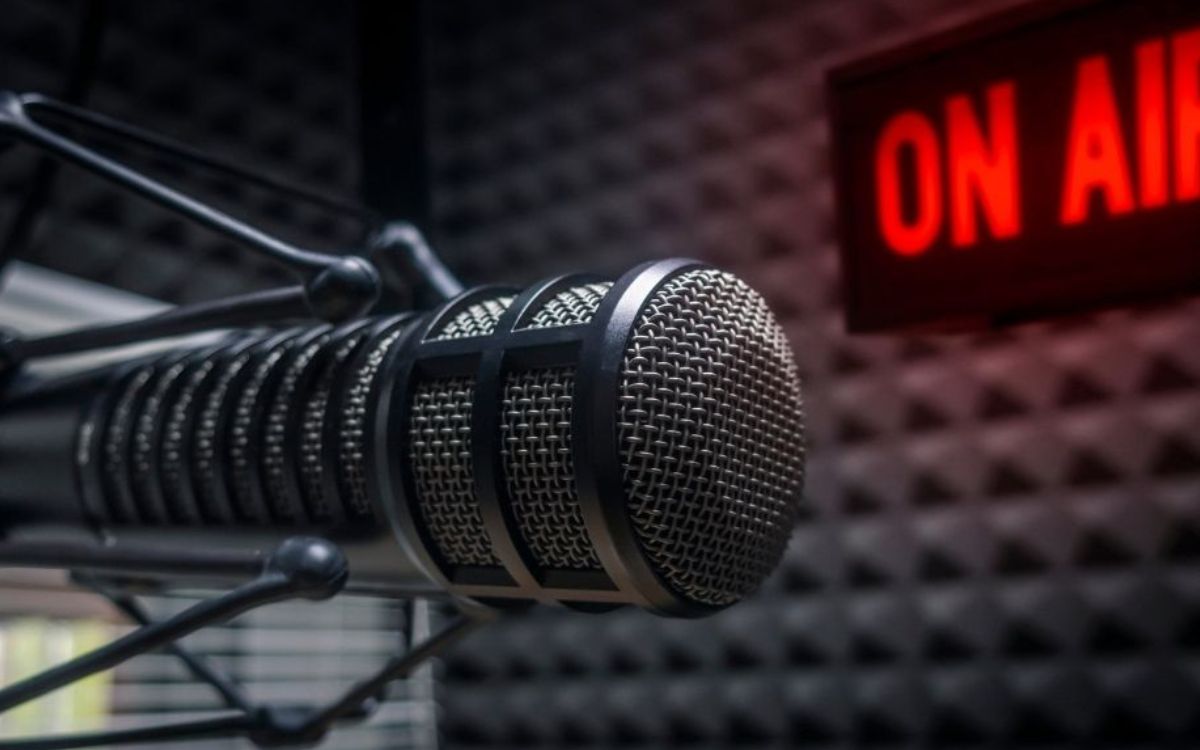Home>Devices & Equipment>Microphone>What Is A Large Diaphragm Condenser Microphone
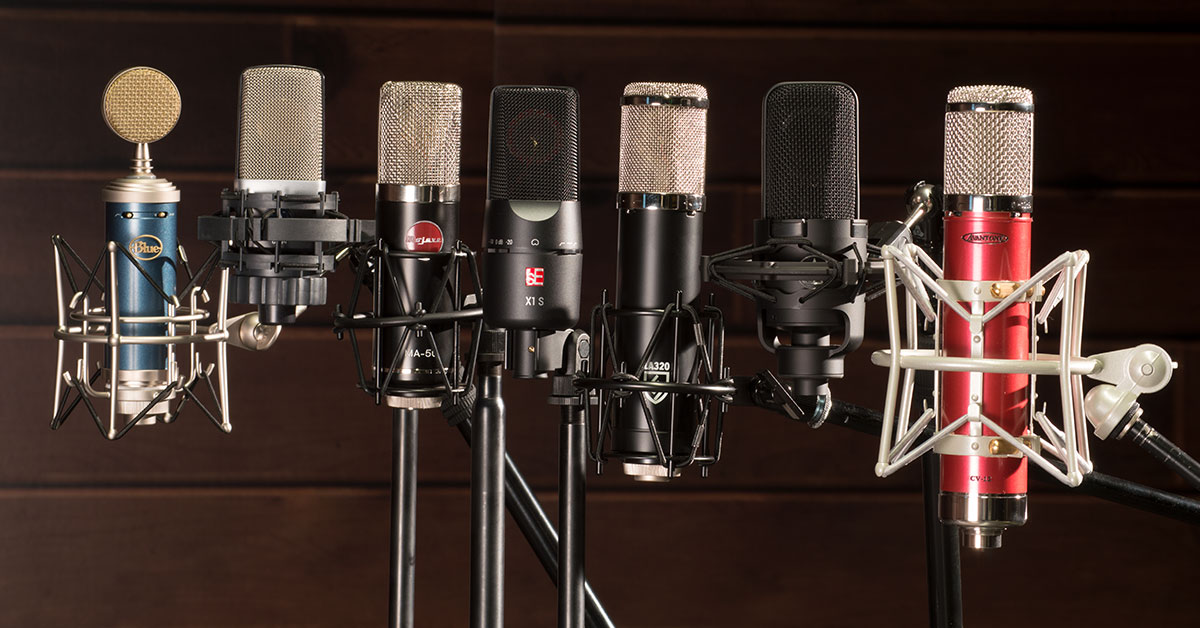

Microphone
What Is A Large Diaphragm Condenser Microphone
Published: February 17, 2024
Learn about large diaphragm condenser microphones and how they can enhance your audio recordings. Find out the benefits and uses of this versatile microphone. Discover the best large diaphragm condenser microphones for your needs.
(Many of the links in this article redirect to a specific reviewed product. Your purchase of these products through affiliate links helps to generate commission for AudioLover.com, at no extra cost. Learn more)
Table of Contents
Introduction
Introduction
Welcome to the fascinating world of audio technology, where the quest for pristine sound reproduction drives innovation. In this article, we will delve into the realm of large diaphragm condenser microphones, exploring their functionality, applications, and the unique sonic characteristics they offer. Whether you're a seasoned audio engineer, a budding musician, or simply an enthusiast eager to expand your knowledge, this exploration promises to unveil the inner workings and diverse uses of these remarkable devices.
Large diaphragm condenser microphones have long been revered for their ability to capture the nuances of sound with exceptional clarity and detail. From studio recording sessions to live performances, these microphones play a pivotal role in shaping the sonic landscape across various domains. By understanding the intricacies of these devices, you can gain a deeper appreciation for the art and science of audio capture, and perhaps even elevate your own creative endeavors.
Throughout this article, we will unravel the mysteries behind large diaphragm condenser microphones, shedding light on their inner workings, applications, and the advantages they offer. Additionally, we will explore potential limitations and considerations when utilizing these microphones, providing a comprehensive overview that equips you with the knowledge to make informed decisions in your audio pursuits. So, without further ado, let's embark on this illuminating journey into the world of large diaphragm condenser microphones.
What Is a Large Diaphragm Condenser Microphone?
What Is a Large Diaphragm Condenser Microphone?
A large diaphragm condenser microphone, often referred to as an LDC microphone, is a type of microphone renowned for its exceptional sensitivity and ability to capture a wide frequency range with precision. At the heart of this microphone lies a diaphragm, typically measuring around one inch in diameter or larger, which plays a crucial role in capturing sound waves. Unlike dynamic microphones that use a coil and magnet to convert sound into electrical signals, condenser microphones utilize an electrically charged diaphragm and a backplate to achieve this conversion.
The diaphragm of a large condenser microphone is incredibly thin and responsive, allowing it to accurately capture subtle variations in sound pressure. This sensitivity makes LDC microphones well-suited for capturing vocals, acoustic instruments, and ambient sounds with remarkable fidelity. Whether in a professional recording studio or a home setup, these microphones are valued for their ability to reproduce sound with exceptional clarity and detail.
One of the defining characteristics of large diaphragm condenser microphones is their extended frequency response, which enables them to capture both low and high frequencies with precision. This broad frequency range makes them versatile tools for recording a wide array of sound sources, from the deep resonance of a double bass to the shimmering harmonics of a cymbal. Additionally, the inherent low self-noise of condenser microphones contributes to their reputation for delivering pristine audio quality, making them indispensable in critical recording applications.
Large diaphragm condenser microphones are available in a range of designs, including tube and solid-state models, each offering distinct sonic characteristics. While tube condenser microphones are revered for their warm and vintage-inspired sound, solid-state condensers are prized for their transparency and accuracy. Understanding the sonic traits of different large diaphragm condenser microphones empowers audio professionals and enthusiasts to select the ideal microphone for a given recording scenario, ensuring that the sonic nuances are faithfully captured.
How Does a Large Diaphragm Condenser Microphone Work?
How Does a Large Diaphragm Condenser Microphone Work?
Large diaphragm condenser microphones operate on the principle of electrostatic transduction, wherein sound waves interact with a charged diaphragm to produce electrical signals. This process begins with the diaphragm, a thin membrane typically made of gold-sputtered Mylar or other conductive materials, which is suspended in close proximity to a backplate. The diaphragm and backplate form a capacitor, with the air gap between them serving as the dielectric material.
When sound waves reach the diaphragm, they cause it to vibrate in accordance with the variations in air pressure. As the diaphragm moves, the distance between it and the backplate changes, resulting in fluctuations in the capacitance of the capacitor. These changes in capacitance induce corresponding variations in the electric charge across the capacitor, effectively converting the mechanical energy of the sound waves into electrical signals.
To maintain the necessary electrical charge on the diaphragm, large diaphragm condenser microphones require an external power source, typically provided through phantom power from a mixing console, audio interface, or dedicated power supply. This power serves to polarize the diaphragm, establishing the electrical field that enables it to respond to sound waves and generate the desired electrical signals.
Once the electrical signals are produced, they are then conveyed through the microphone's internal circuitry and output connector, ultimately traveling to a preamplifier or recording device for further processing and amplification. The resulting electrical signals accurately represent the audio input received by the microphone, preserving the nuances and subtleties of the sound source with remarkable fidelity.
This process of electrostatic transduction lies at the core of a large diaphragm condenser microphone's functionality, allowing it to capture the intricate details of vocals, instruments, and environmental sounds with exceptional precision. The combination of a large, responsive diaphragm and electrostatic transduction enables these microphones to deliver the nuanced, transparent, and high-fidelity audio reproduction for which they are renowned.
Applications of Large Diaphragm Condenser Microphones
Applications of Large Diaphragm Condenser Microphones
Large diaphragm condenser microphones find widespread use across various audio recording and sound reinforcement applications, owing to their exceptional sensitivity, broad frequency response, and ability to capture nuanced sonic details. Here are some key applications where these microphones shine:
-
Vocal Recording: Large diaphragm condenser microphones are a popular choice for capturing vocal performances in the studio. Their sensitivity and extended frequency range allow them to faithfully reproduce the nuances of singers' voices, capturing both the subtle inflections and the powerful dynamics of vocal performances. Whether recording intimate ballads or powerful belting, these microphones excel in conveying the emotional depth of vocal performances.
-
Acoustic Instruments: From acoustic guitars and pianos to string ensembles and percussion instruments, large diaphragm condenser microphones are prized for their ability to capture the rich harmonics and transient details of acoustic instruments. Their extended frequency response and low self-noise make them ideal for recording acoustic performances with clarity and fidelity, adding a captivating dimension to the sonic textures of acoustic music.
-
Ambient Recording: Whether capturing the natural sounds of the environment, room ambience in a recording studio, or the reverberant characteristics of a performance space, large diaphragm condenser microphones excel in capturing the spatial and tonal qualities of ambient sound. This makes them valuable tools for creating immersive and lifelike sonic environments in recordings and sound design.
-
Broadcasting and Podcasting: Large diaphragm condenser microphones are favored in broadcasting and podcasting for their ability to deliver broadcast-quality audio with warmth and clarity. Whether used in radio studios, podcasting setups, or voiceover recording, these microphones offer a professional-grade solution for capturing speech and vocal performances with exceptional intelligibility and presence.
-
Live Sound Reinforcement: While dynamic microphones are commonly used for live vocals, large diaphragm condenser microphones are occasionally employed in concert settings, particularly for capturing the vocals of accomplished vocalists where capturing the finest nuances is paramount. Their ability to convey the subtleties of vocal performances can elevate the sonic quality of live concerts and theatrical productions.
-
Drum Overheads and Room Miking: In studio recording, large diaphragm condenser microphones are often utilized as drum overheads, capturing the overall sound and spatial characteristics of drum kits with clarity and depth. Additionally, they are employed for room miking to capture the ambient sound of the recording space, adding a sense of air and dimension to the overall mix.
These diverse applications underscore the versatility and sonic prowess of large diaphragm condenser microphones, positioning them as indispensable tools for capturing a wide range of sound sources with exceptional fidelity and detail. Whether in the controlled environment of a recording studio or the dynamic setting of live sound reinforcement, these microphones continue to shape the sonic landscape across the realms of music, broadcasting, and audio production.
Advantages and Disadvantages of Large Diaphragm Condenser Microphones
Advantages and Disadvantages of Large Diaphragm Condenser Microphones
Large diaphragm condenser microphones offer a range of benefits and considerations that are important to understand when selecting the appropriate microphone for a specific recording or sound reinforcement application. Let's explore the advantages and disadvantages of these versatile microphones:
Advantages:
-
Sensitivity and Detail: Large diaphragm condenser microphones are renowned for their exceptional sensitivity, capturing subtle details and nuances with remarkable clarity. This makes them well-suited for capturing vocals, acoustic instruments, and ambient sounds with fidelity and precision.
-
Extended Frequency Response: These microphones offer a broad frequency response, enabling them to capture both low and high frequencies with accuracy. This versatility makes them suitable for recording a wide range of sound sources, from deep bass tones to sparkling highs.
-
Low Self-Noise: Large diaphragm condenser microphones exhibit low self-noise, allowing them to capture quiet passages and delicate sonic details without introducing unwanted background noise. This characteristic contributes to their reputation for delivering pristine audio quality.
-
Versatility: From studio recording to live sound reinforcement, large diaphragm condenser microphones find applications across diverse audio production scenarios. Their ability to capture vocals, acoustic instruments, ambient sound, and more makes them versatile tools for audio professionals and enthusiasts.
-
Transparency and Accuracy: Solid-state large diaphragm condenser microphones are prized for their transparency and accuracy, faithfully reproducing the sonic characteristics of the sound source. This makes them valuable for capturing audio with a natural and uncolored sonic signature.
Disadvantages:
-
Sensitivity to Handling Noise: Due to their high sensitivity, large diaphragm condenser microphones can be susceptible to picking up handling noise and vibrations. Careful handling and the use of shock mounts or isolation devices are often necessary to mitigate this issue.
-
Phantom Power Requirement: These microphones require phantom power to operate, typically 48 volts supplied by a mixing console, audio interface, or dedicated power supply. While phantom power is standard in most recording setups, it is an additional consideration when using large diaphragm condenser microphones.
-
Proneness to Distortion at High Sound Pressure Levels: In some cases, large diaphragm condenser microphones may exhibit distortion when subjected to extremely high sound pressure levels, such as those encountered in close-miking loud sound sources. Dynamic microphones are often preferred for such applications.
-
Cost: High-quality large diaphragm condenser microphones can be relatively expensive compared to dynamic microphones, particularly for models designed for professional studio use. This cost consideration may impact the accessibility of these microphones for budget-conscious users.
Understanding the advantages and limitations of large diaphragm condenser microphones empowers audio professionals and enthusiasts to make informed decisions when selecting the ideal microphone for a given recording or sound reinforcement scenario. By weighing these factors, individuals can leverage the strengths of these microphones while mitigating potential challenges to achieve exceptional audio results.
Conclusion
Conclusion
Large diaphragm condenser microphones stand as stalwart pillars in the realm of audio capture, revered for their ability to faithfully reproduce the subtleties and nuances of sound with exceptional clarity and precision. From the delicate timbre of a vocalist’s performance to the shimmering resonance of acoustic instruments, these microphones have left an indelible mark on the landscape of audio production, enriching recordings and live performances with their sonic prowess.
As we’ve journeyed through the inner workings, applications, and considerations surrounding large diaphragm condenser microphones, it becomes evident that these devices are more than mere tools; they are conduits that bridge the gap between the sonic realm and human perception. The sensitivity, extended frequency response, and low self-noise of these microphones enable them to capture the raw emotion and sonic intricacies inherent in musical performances and environmental sounds.
While they boast a myriad of advantages, including their versatility, transparency, and fidelity, it’s important to acknowledge the considerations associated with large diaphragm condenser microphones, such as their sensitivity to handling noise and the requirement for phantom power. By understanding these nuances, audio professionals and enthusiasts can harness the full potential of these microphones while mitigating potential challenges.
Whether in the controlled environment of a recording studio, the immersive realm of live sound reinforcement, or the intimate setting of a podcasting studio, large diaphragm condenser microphones continue to shape the sonic landscape, enriching the auditory experiences of audiences and listeners worldwide. Their ability to capture the essence of sound with unwavering precision and transparency ensures that they will remain indispensable tools for audio professionals and enthusiasts alike.
As technology advances and new frontiers in audio production emerge, one thing remains certain: the enduring legacy of large diaphragm condenser microphones as steadfast companions in the pursuit of sonic excellence.


